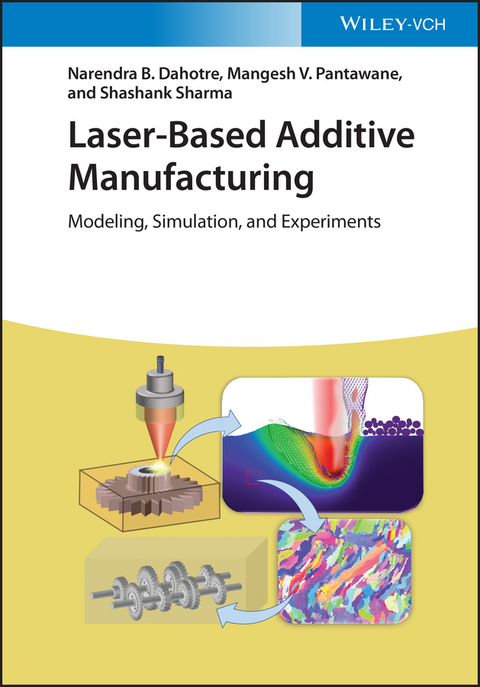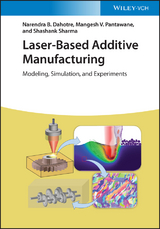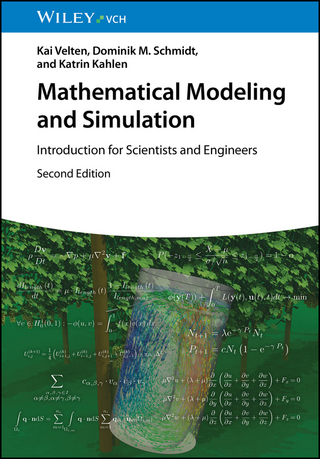Laser-Based Additive Manufacturing
Wiley-VCH (Verlag)
978-3-527-34791-9 (ISBN)
Narendra B. Dahotre is Regents Professor in the Department of Materials Science and Engineering at the University of North Texas, USA. His research focuses on laser material interactions and the implementation of high-power lasers in materials processing and advanced manufacturing Mangesh V. Pantawane is Research Assistant in the Department of Materials Science and Engineering at the University of North Texas, USA. His research focuses on laser-material interactions for physical phenomena.
1 INTRODUCTION TO ADDITIVE MANUFACTURING
1.1 Manufacturing Techniques
1.2 What is Additive Manufacturing (AM)?
1.3 Laser-based Additive Manufacturing (LAM)?
1.4 Advantages of AM over Conventional Manufacturing
1.5 Current Challenges Associated with AM
1.6 Importance of Computational Modeling in AM
1.7 References
2 COMPUTATIONAL MATERIALS SCIENCE
2.1 Introduction to Computational Materials Science
2.2 Length- and Time-Scale in Materials Modeling
2.3 Current State of Computational Modeling in LAM
2.4 References
3 LASER-MATERIAL INTERACTION IN LAM
3.1 Conversion of Light Energy to Heat
3.2 Modes of Heat Dissipation
3.3 Dynamics of the Melt-Pool
3.4 References
4 MICROSTRUCTURAL AND MECHANICAL ASPECTS IN LAM INTEGRATED WITH MODELING
4.1 Solidification
4.2 Microstructural Variation and its Prediction
4.3 Effects of Laser Parameters
4.4 Scanning Strategy and Texture Evolution in the Microstructure
4.5 Mechanical Properties
5 RESIDUAL STRESSES AND THREE-DIMENSIONAL DEFECTS IN LAM
5.1 Design of Precursors in LAM
5.2 Thermal Stress Modeling
5.3 Optimum Laser Parameters and Scanning Strategy Prediction by Modeling
5.4 References
6 SURFACE PHYSICAL TEXTURE IN LAM
6.1 Effect of Melt-Pool Dynamics on Surface Texture
6.2 Surface Physical Texture Variation in LAM
6.3 References
| Erscheinungsdatum | 19.08.2022 |
|---|---|
| Verlagsort | Weinheim |
| Sprache | englisch |
| Maße | 170 x 244 mm |
| Gewicht | 728 g |
| Themenwelt | Naturwissenschaften ► Chemie |
| Technik ► Maschinenbau | |
| Schlagworte | Bruchmechanik • chemical engineering • Chemische Verfahrenstechnik • Computer-aided Engineering • Computergestützte Verfahrenstechnik • Failure Fracture • Maschinenbau • materials processing • Materials Science • Materialverarbeitung • Materialwissenschaften • mechanical engineering |
| ISBN-10 | 3-527-34791-7 / 3527347917 |
| ISBN-13 | 978-3-527-34791-9 / 9783527347919 |
| Zustand | Neuware |
| Informationen gemäß Produktsicherheitsverordnung (GPSR) | |
| Haben Sie eine Frage zum Produkt? |
aus dem Bereich




